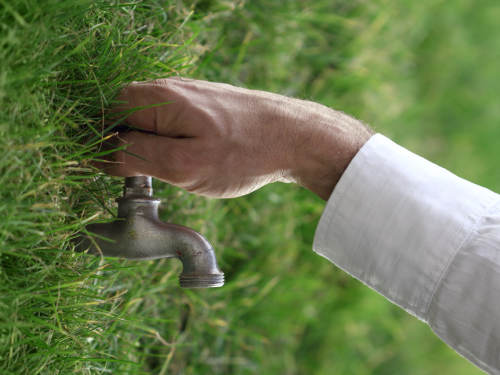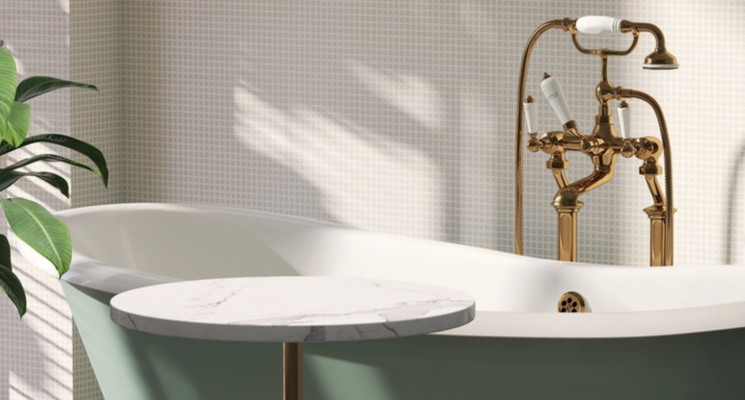Sustainable Plumbing Solutions: Building a Sustainable Residential Environment
Sustainable Plumbing Solutions: Building a Sustainable Residential Environment
Blog Article
Nearly everybody seems to have their own notions on the subject of Sustainability Remains Key Trend in Plumbing Practices.

Introduction
In today's world, lasting living is ending up being significantly crucial. One area where homeowners can make a substantial impact is with environmentally friendly pipes options. By taking on environmentally mindful methods, homes can minimize their water and energy consumption while adding to a healthier earth.
Water-Efficient Components
Typical components usually drainage unnecessarily. However, modern low-flow bathrooms, faucets, and showerheads are made to lessen water usage without compromising efficiency. These fixtures can considerably lower house water usage, leading to reduced water bills and a reduced ecological footprint.
Greywater Solutions
Greywater describes delicately used water from sources such as showers, sinks, and cleaning devices. Instead of letting this water go to waste, greywater systems reuse it for non-potable usages such as landscape irrigation and commode flushing. By implementing a greywater system, house owners can conserve fresh water resources and lower pressure on municipal wastewater therapy centers.
Rainwater Harvesting
Rainwater harvesting involves collecting and saving rain for various functions, including watering, commode flushing, and laundry. Rain gathering systems usually consist of a collection surface area (such as a roofing), rain gutters, downspouts, and storage tanks. By collecting rainwater, home owners can decrease their dependence on community water resources and conserve fresh water resources.
Solar Water Heaters
Standard hot water heater depend on nonrenewable fuel sources or electrical power to warm water, adding to carbon emissions and energy intake. On the other hand, solar water heaters utilize sunshine to warm water, using an eco-friendly and environmentally friendly option. By harnessing solar power, home owners can lower their energy bills and decrease their carbon footprint.
Environment-friendly Pipeline Materials
Standard pipes products such as copper and PVC can have negative environmental effects during production and disposal. Nevertheless, there are sustainable options offered, such as recycled steel, cross-linked polyethylene (PEX), and high-density polyethylene (HDPE). These environment-friendly pipeline materials provide toughness, long life, and minimized ecological effect.
Energy-Efficient Appliances
Along with water-efficient components, energy-efficient home appliances can even more minimize a family's environmental footprint. High-efficiency cleaning devices and dishwashers make use of much less water and energy per cycle, helping to preserve sources and lower energy bills. When purchasing home appliances, look for power CELEBRITY ® accredited versions for maximum efficiency.
Smart Water Monitoring Systems
Developments in technology have actually made it easier than ever to keep an eye on and maximize water use in the home. Smart water management systems utilize sensing units and information analytics to track water use in real-time, recognize leakages, and provide insights for conservation. By executing wise water administration options, house owners can decrease waste and make the most of efficiency.
Cost Considerations
While green pipes choices may have higher upfront prices than typical options, they typically offer long-term financial savings with decreased water and power expenses. Additionally, several federal governments offer motivations such as refunds and tax obligation credit ratings for green upgrades, assisting to counter preliminary expenditures.
Installation and Upkeep
Proper setup and regular upkeep are important for guaranteeing the efficiency and durability of green plumbing systems. It is necessary to hire qualified specialists to install and service these systems to avoid problems and make best use of performance. Routine upkeep tasks such as looking for leakages and cleansing filters can additionally help prevent troubles and maximize efficiency.
Environmental Advantages
The environmental advantages of environment-friendly pipes are considerable. By saving water and power, house owners can minimize their carbon footprint and minimize their impact on natural deposits. Furthermore, environmentally friendly plumbing techniques can help protect ecosystems and protect biodiversity for future generations.
Health Conveniences
In addition to ecological benefits, green plumbing can additionally contribute to enhanced interior air high quality and wellness. By using non-toxic products and minimizing chemical exposure, home owners can create a healthier living atmosphere on their own and their families.
Government Rewards
Numerous governments use financial motivations to urge property owners to adopt eco-friendly plumbing practices. These rewards might consist of refunds, tax credit scores, and low-interest lendings for energy-efficient upgrades. By benefiting from these programs, homeowners can make eco-friendly renovations a lot more affordable and easily accessible.
Conclusion
Finally, environmentally friendly plumbing alternatives offer many advantages for home owners and the environment alike. By purchasing water-efficient fixtures, greywater systems, rainwater harvesting, solar hot water heater, environment-friendly pipe products, energy-efficient devices, smart water management systems, and other sustainable remedies, households can decrease their environmental footprint, lower their utility bills, and contribute to a much healthier earth for future generations.
Eco-Friendly Plumbing: Transform Your Home with Sustainable Plumbing Options
Understanding Eco-Friendly Plumbing System
At its core, eco-friendly plumbing is all about minimizing water and energy consumption in your home. It’s a green plumbing revolution changing how we think about our water supply and energy use. It offers many options for homeowners, whether you’re upgrading your home or dealing with an older home. By making these changes, you can help the environment, save money on your water and electricity bills, and create a greener, more sustainable home. So, read on to learn how to use eco-friendly plumbing solutions today.
Low Flow Fixtures: A Key to Water Conservation
One of the cornerstones of eco friendly plumbing is the use of low-flow fixtures. These fixtures, which include faucets, showerheads, and toilets, are designed to use much less water than their traditional counterparts. For instance, low-flow showerheads use significantly less water per minute than a standard showerhead without compromising the quality of your shower.
Low-flow toilets are another excellent example of water-saving options. They use fewer gallons of water per flush, making them a more water-efficient choice. By reducing your water usage, these fixtures contribute to a greener home and substantial savings on your water bills.
Maintaining an Eco-Friendly Plumbing System
Another critical aspect of eco-friendly plumbing is addressing water leaks promptly. A small water leak can waste much water over time, leading to water damage and increased water bills.
Regularly checking your plumbing system and fixing leaks can help save gallons of water and reduce your water bills.
Tankless Water Heaters: Hot Water When You Need It
Tankless water heaters, a popular choice in eco-friendly plumbing, are a revolutionary way to heat water in your home. Unlike traditional water heaters that constantly heat a tank of water, tankless water heaters operate on an on-demand basis. This means they only use energy when you need hot water, making them a more energy-efficient option.
This innovative approach to heating water can significantly reduce the energy your home uses. Traditional water heaters constantly work to keep a water tank heated, which requires much energy. In contrast, tankless water heaters heat water when needed, reducing energy consumption and saving money on energy bills. This is a great way to make your home more eco-friendly and embrace an eco-friendly lifestyle.
Insulating Water Pipes: Maximizing Energy Efficiency
Insulating your water pipes is another effective method in eco-friendly plumbing. Proper insulation can prevent heat loss, ensuring your hot water remains hot as it travels from your water heater to your faucet or showerhead. This means your water heater won’t have to work as hard to heat the water, thus saving energy.
For instance, insulating your water pipes can further enhance energy efficiency if you’re using a tankless water heater, which heats water only when needed. This is because the insulation reduces the heat lost as the hot water travels through the pipes, meaning the heater uses less energy to bring the water to the desired temperature.
Dual Flush Toilets: A Water Saving Option
Dual flush toilets are another excellent eco-friendly plumbing option that can help you save water. These toilets offer two flush options: one for liquid waste and one for solid waste. The liquid waste option uses less water than solid waste, allowing you to choose the water flow for each flush based on your needs.
Using less water for liquid waste, dual flush toilets can save thousands of gallons per year compared to traditional bathrooms. This can lead to significant savings on your water bills and contribute to a more sustainable and eco-friendly home.
Touchless Faucets: Saving Water With a Wave of Hand
Touchless faucets are a modern, eco-friendly plumbing option that can help reduce unnecessary water use. These faucets use motion sensors to turn on and off, meaning they only use water when you need it.
This can be particularly useful in the kitchen, where your hands might be full or dirty. Instead of leaving the water running while you handle food or clean dishes, the faucet will only run when your hand comes near the sensor. This reduces water flow and helps you use less water than traditional faucets, contributing to a more eco-friendly lifestyle.
Eco-Friendly Pipes: Eco-Friendly Plumbing Options
When considering eco-friendly plumbing options, paying attention to the materials used in your plumbing system is essential. Some pipes, like those made from copper or stainless steel, are recyclable and more environmentally friendly than PVC pipes. Choosing eco-friendly materials for your pipes can reduce your home’s environmental impact and create a more sustainable plumbing system. By making these small changes, you can make a big difference in your home’s eco-friendliness.
Eco-Friendly Plumbing: Make Your Home Greener
Switching to eco-friendly plumbing options can have a significant positive impact on the environment and your wallet. Not only can these changes reduce your water and energy consumption, but they can also help prevent water waste and damage, contributing to a healthier planet.
Eco-friendly plumbing is more than just a trend; it’s a lifestyle change contributing to a more sustainable future. By making these changes in your home, you can help the planet while saving money on your water and energy bills.
https://intownplumbingtx.com/articles/eco-friendly-plumbing/

I'm just very fascinated by Sustainable plumbing solutions for your home tips and I hope you appreciated our blog posting. For those who enjoyed reading our post plz consider to share it. We truly appreciate your readership.
Click Report this page